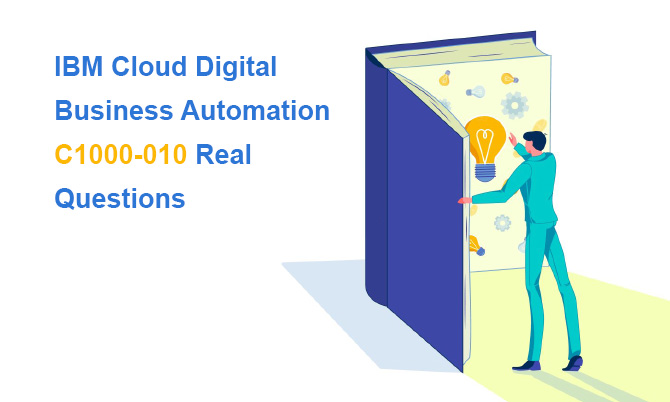IBM certification C1000-010 exam is a required test for IBM Certified Application Developer-Operational Decision Manager Standard V8.9.1 certification, which is intended for application developers with a working knowledge of the IBM Operational Decision Manager Standard V8.9.1 platform needed to develop decision management solutions (business rules applications). We provide the latest IBM Cloud Digital Business Automation C1000-010 real exam questions, which are good for you to pass the test easily.

IBM Cloud Digital Business Automation C1000-010 Exam
Reading IBM Operational Decision Manager Standard V8.9.1 Application Development C1000-010 exam information is a first step for you to learn the test.
Number of questions: 61
Time allowed: 90 mins
Number of questions to pass: 46
Available language: English
IBM C1000-010 Exam Topics
IBM Cloud Digital Business Automation C1000-010 exam topics cover the following 5 sections.
Development: Environment Set-up 9%
Install
Migrate
Development: Architecture 16%
Analyze business requirements
Plan the Architecture
Identify decisions, decision points, and business policies
Rule Designer 39%
Create Decision Service projects
Import the XOM
Create BOM and vocabulary
Add Decision Operations
Deploy RuleApp
Create Client Application
Create Ruleflow
Author rules and decision tables
Manage BOM update
Manage synchronization
Define and run queries
Decision Center 16%
Define Roles and Responsibilities
Secure Decision Center
Define decision governance framework
Set up Deployment from Decision Center
Enable and customize testing and simulations for business users
Understand branching and merging
Rule Execution Server 20%
Work with the RES REST API
Manage RuleApp and Ruleset Versioning policy
Integration
Use Decision Warehouse
Optimize Execution
Share IBM C1000-010 Real Exam Questions
IBM Certification C1000-010 real exam questions contain 61 Q&As, which can help you test all the above exam topics. Share some IBM Operational Decision Manager Standard V8.9.1 Application Development C1000-010 real exam questions and answers below.
1.Which statement regarding decision services is true?
A.Decision services can be configured through parameters in the properties when rule extractors are used.
B.The source rule project for the decision operation determines the rules, variables, and dependent projects that are eligible to be included in the rule set.
C.When a decision service with multiple rule projects is published to Decision Center, standard rule projects are published as source decision service artifacts.
D.The main rule project can be referenced by a XOM for purposes of exposing methods in rules.
Answer: B
2.What is the purpose of the Decision Warehouse?
A.To store historical changes made to rule projects so previous versions can be restored
B.To store execution traces to monitor ruleset execution
C.To store all meta data about deployed rulesets
D.To store all deployed rulesets
Answer: B
3.A decision operation can be defined for a decision service in the Rule Designer. What can be selected in the process of creating a decision operation?
A.A ruleflow
B.A dynamic domain
C.A rule engine type
D.A target server
Answer: C
4.A company wants to implement a business rules solution for warranty claims on their widgets. The customer requires that servers should not store any information about the context of clients between calls and must have a strict enforcement of objects, rules and constraints. The implementation must support complex operations and synchronous calls. Integration with other services must be platform independent. What implementation best fits the customers requirements?
A.Use an HTDS SOAP web service and JSON format.
B.Implement an MDB with JSON format.
C.Use a local EJB rule session.
D.Implement a custom SOAP web service and XML format
Answer: A
5.Which correctly represents the deployed RuleApp ruleset path template?
A.RuleApp/RuleApp_minor.RuleApp_major/Ruleset/Ruleset_minor.Ruleset_major
B.RuleApp/RuleApp_major. RuleApp_minor/Ruleset/Ruleset_major. Ruleset_minor
C.Ruleset/Ruleset_minor. Ruleset_major/RuleApp/RuleApp_minor. RuleApp_major
D.Ruleset/Ruleset_major. Ruleset_minor/RuleApp/RuleApp_major. RuleApp_minor
Answer: B
